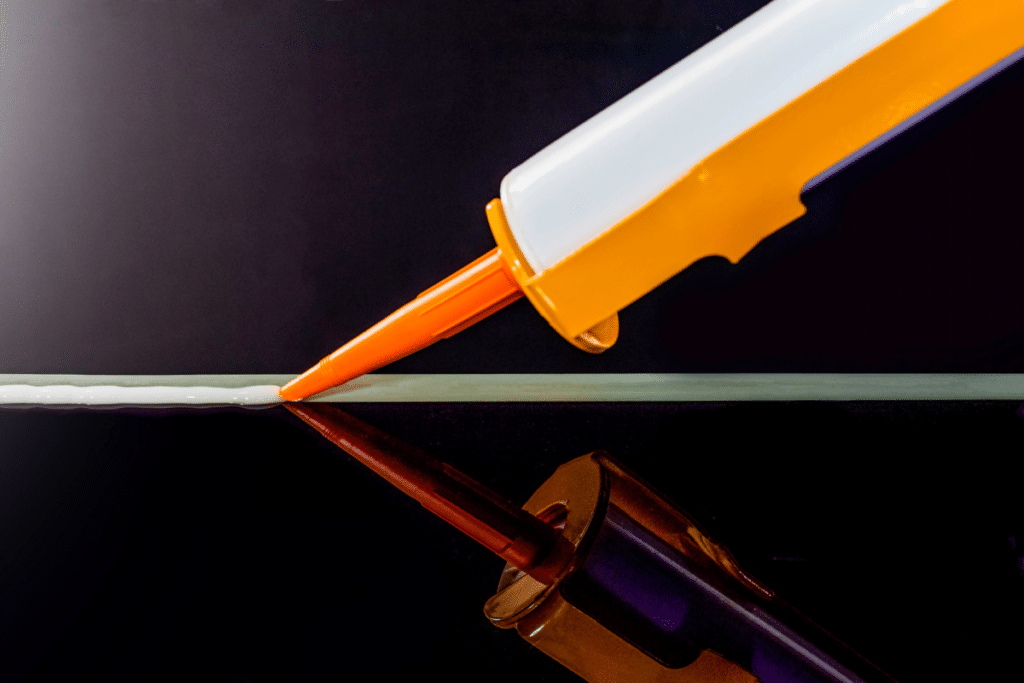Colorado Springs sure is a great place to live and do business. But the climate is, well, let’s say, varied. With an average July high of 84°F and an average January low of 17°F, your building needs to be well insulated. Request A Free Consultation
That’s where commercial caulking comes in. Caulking helps to protect your commercial property year-round. It keeps the heat or cooling in and can help you keep your energy bills under control.
Are you wondering how often you should have your caulking replaced? Let’s take a closer look at that question and understand why joint caulking is valuable for businesses.
The Importance of Commercial Caulking
Caulk is a flexible adhesive sealant used to seal gaps in buildings. It’s suitable for joints that are less than 1/4 inch wide. If the gap is wider or one of the materials moves, like a door or window, there are other, more suitable ways of sealing the gaps.
Caulking services usually use caulking guns to inject caulk into the tightest spaces. This makes it outstanding for getting into parts other methods of sealing simply wouldn’t reach. It can also come in aerosol cans and even ropes for certain situations.
Striking the Right Balance
Every building maintenance crew needs to understand the balance between air sealing and ventilation.
Ventilation ensures that everyone in the building is breathing clean, fresh air. It also helps to get rid of dirty air and keep humidity under control. Without adequate ventilation, you’ll get problems with mold and other pollutants.
At the same time, you don’t want air coming in unintentionally. Over time, caulking starts to fail. This can let too much air into and out of the building.
Colorado Springs may not get a lot of rain, but it does get plenty of snow. If left unchecked, water from the outside can start to penetrate your commercial property. Before you know it, you can have leaks that cause expensive damage and mold taking hold of your building.
Energy Savings from Replacing Caulking
A study by the National Institute for Standards and Technology (NIST) investigated the effect of air filtration in commercial buildings. It found that air infiltration is responsible for 13% of the heating load and 4% of the cooling load. It also found that air infiltration is not related to the age of the building.
This shows that caulking is a critical part of commercial property maintenance. Businesses want to boost their green credentials and keep their energy costs down. Commercial caulking is an easy win.
A study in North Carolina estimated that commercial property of 100,000 square feet could save over $10,000 per year with caulking and weather stripping improvements. Imagine how much you could save in a cooler state like Colorado!
Keep Pests Out
Sealing gaps in your building with caulk is your first line of defense against insects. Bugs don’t want to face the harsh Colorado winter outdoors. They’re looking for a place to hide, and they’ll flock to any gaps they can find in your building.
Commercial caulking ensures your building is well-sealed. Insects will get the message and start looking elsewhere.
How Often Should You Redo Your Caulking?
Caulking is one of those structural elements of a building that it’s easy to take for granted until it starts to go wrong. However, it’s important to schedule regular caulking checks if you’re in charge of building maintenance. You can probably get away with doing them every two years, but every year is good to be on the safe side.
How Long Does Caulk Last?
On the tube of caulk, it will tell you its expected life. Ideally, whenever you replace a caulking section, you should schedule its renewal on your building maintenance plan.
There are two main types of caulk—silicone and polyurethane. Their expected life is:
- Silicone caulk—more than twenty years
- Polyurethane caulk—five to ten years
If your caulking has been replaced piecemeal over the years, keeping track of its maintenance can be very hard. Some parts may be in relatively good condition, while others are costing you money every day. Some sections of caulking also work a lot harder than others, such as those around vents.
It’s a good idea to schedule an inspection from a local commercial caulking service in Colorado Springs. They’ll give you an honest appraisal of the state of your caulking. If things are looking bad, they’ll give you a quotation to replace all of the caulking to get your building adequately sealed again.
Different Types of Caulking
As mentioned, there are two main types of caulking.
Silicone caulk is an inorganic material. This makes it highly resilient to changes in temperature, and it’s unlikely to crack. It is also UV resistant and water-resistant.
The challenge with silicone caulk is that it has an unpleasant smell and is hard to apply. That’s why it’s always the best course to choose commercial caulking services with the skills and experience to apply silicone caulk correctly.
The second common type is polyurethane caulk. This is an organic and very flexible option, making it a hard-wearing choice. However, it is affected by UV radiation and will break down more quickly than silicone caulk.Request A Free Consultation
A commercial property maintenance company will know which caulk is suitable for different areas. This expert knowledge and application will ensure you get a great result that will last for years.
Choose TECC Painting for Commercial Caulking in Colorado Springs
At TECC Painting, we have over 40 years of experience in building maintenance in Colorado Springs. You can trust us to handle your commercial caulking project and get a great seal on your property.
Ready to get a free quotation? Call us at (719) 577-9300 or reach out online today!








